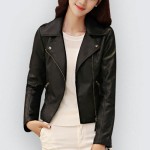Difference Between Faux Fur and Real Fur
23 Dec


Posted By
0 Comment(s)
1075 View(s)
In the realm of design, the discussion between faux fur and real fur has been continuous for quite a long time. As customers become more aware of their decisions, it's fundamental to comprehend the distinctions between these two kinds of fur to pursue informed choices. From moral worries to natural effect and by and large feel, there are different variables to consider. In this extensive aide, we will dive into the qualifications between faux fur and real fur to assist you with settling on decisions that line up with your qualities and inclinations.
The Fundamentals of Faux Fur
1. Material Organization:
Faux fur, otherwise called engineered or counterfeit fur, is created from man-made materials. Ordinarily, it is made out of manufactured filaments like polyester, acrylic, and modacrylic. These materials are intended to copy the surface and presence of Real creature fur.
2. Ethical Issues to Consider:
One of the essential reasons individuals pick faux fur is its moral benefit. Faux fur contributes to the growing trend toward fashion that does not exploit animals and eliminates the need for animal exploitation. Faux fur can be a good choice if you care about how animals should be treated ethically.
3. Natural Effect:
While faux fur dispenses with the moral worries connected with creature government assistance, taking into account its natural impact is fundamental. Chemicals and energy are used to make synthetic materials, which makes it more polluting. Moreover, faux fur isn't biodegradable, possibly presenting difficulties for garbage removal.
4. Affordability:
Faux fur is for the most part more reasonable than Real fur. It is an appealing option for people who want the feel and look of fur without paying the higher price.
5. Versatility:
Faux fur offers creators many innovative potential outcomes. It very well may be created in different tones and examples, giving flexibility in style and plan.
The Fundamentals of Real Fur
1. Substance Composition:
Real fur is gotten from creature pelts, commonly from creatures like minks, foxes, hares, and chinchillas. Each kind of fur has unmistakable attributes, for example, surface and variety, which add to its allure in the design business.
2. Moral Contemplations:
The utilization of genuine fur has for quite some time been a combative issue because of worries about creature brutality. Poor living conditions, confinement, and cruel treatment are possible for animals raised for their fur. Associations supporting for basic entitlements frequently go against the utilization of genuine fur on moral grounds.
3. Natural Effect:
Real fur creation has critical natural ramifications. The cycle includes different synthetic compounds for protection and coloring, adding to contamination. Moreover, fur cultivating requires critical assets, including water and energy.
4. Durability:
Real fur is famous for its strength and life span. With legitimate consideration, genuine fur articles of clothing can keep going for a long time, frequently becoming treasure pieces gone down through ages.
5. Extravagance and Distinction:
Real fur has for some time been related with extravagance and glory. All things considered, it has been an image of riches and societal position. A few people favor genuine fur for its selectiveness and the material experience it gives.
Important Things To Think About
1. Moral Principles:
Think about your moral position on creature government assistance. In the event that you are focused on mercilessness free practices, Fauxl fur is possible the more appropriate choice for you. Then again, on the off chance that you are alright with capably obtained genuine fur, you might focus on different variables.
2. Natural Effect:
Assess the natural effect of both faux fur and genuine fur. While faux fur tends to creature government assistance concerns, it accompanies its own arrangement of natural issues. Genuine fur, albeit regular, presents difficulties regarding asset utilization and contamination. Search for reasonable practices inside the two ventures, for example, reusing drives or the utilization of eco-accommodating materials.
3. Budget:
Your financial plan is a down to earth thought. Faux fur is for the most part more reasonable than genuine fur, making it an available choice for a more extensive crowd. Genuine fur, with its relationship with extravagance, comes at a greater expense.
4. Tasteful Inclinations:
Consider your tasteful inclinations and the particular look you need to accomplish. Faux fur gives an expansive scope of plan prospects, while genuine fur offers a remarkable and lavish appearance. Your own style and the planned utilization of the fur piece of clothing ought to direct your choice.
5. Life span and Upkeep:
Consider the fur's durability and your willingness to devote time and effort to upkeep. Genuine fur, when appropriately focused on, can keep going for a really long time. Although faux fur may require less upkeep, it may not last as long.
Faux Fur Coats
Material Sythesis:
Faux fur coats are created from engineered materials like polyester, acrylic, and modacrylic. These filaments are intended to recreate the look and feel of genuine creature fur.
Moral Contemplations:
The essential allure of faux fur coats lies in their moral benefits. By deciding on faux fur, buyers add to the development towards brutality free design, as no creatures are hurt in the creation cycle.
Natural Effect:
While faux fur kills moral worries connected with creatures, its creation has natural ramifications. The manufactured materials utilized, like polyester, are gotten from petrochemicals, adding to contamination. Moreover, the non-biodegradable nature of faux fur raises worries about its drawn out influence on garbage removal.
Affordability:
Faux fur coats are for the most part more spending plan cordial than their genuine fur partners. This reasonableness makes them an alluring choice for people looking for a stylish yet practical decision.
Versatility:
Architects value the adaptability of fauxl fur, as it very well may be created in a variety of varieties and examples. Fashion choices that appeal to a wide range of tastes and preferences can be made creatively and in a variety of ways thanks to this flexibility.
Real Fur Coats
Material Creation:
Genuine fur coats are produced using the pelts of creatures like minks, foxes, hares, and chinchillas. Each sort of fur has special qualities, adding to the attractiveness of the end result.
Ethical Issues to Consider:
The ethical implications of using genuine fur have long been debated. Creatures raised for their fur might go through not so great day to day environments and face unfeeling treatment. Associations supporting for basic entitlements frequently go against the utilization of genuine fur on moral grounds.
Effect on the Environment:
Genuine fur creation has a striking natural impression. Pollution is caused by the use of a variety of chemicals for preservation and dyeing. Additionally, significant resources like energy and water are required for fur farming.
Durability:
Real fur jackets are well-known for their long-lasting durability. With legitimate consideration, they can keep going for a long time, pursuing them a maintainable decision for the people who focus on life span.
Extravagance and Notoriety:
Since ancient times, real fur has been associated with opulence and prestige. The restrictiveness and material experience given by geniune fur coats make them an image of riches and economic wellbeing.
Ethical Values to Consider When Choosing a Fur Jacket
Your position on creature government assistance is a significant calculate settling on faux fur and genuine fur coats. Faux fur is more in line with your values if you place a high value on animal cruelty-free practices. Then again, assuming you are OK with dependably obtained genuine fur, you might focus on different contemplations.
Ecological Effect:
Assess the ecological effect of the two sorts of coats. While faux fur tends to creature government assistance concerns, it accompanies its own arrangement of ecological issues. Even though real fur is natural, it has problems with pollution and the use of resources.
Preferences in Aesthetics:
Your own style and the particular look you need to accomplish ought to direct your choice. Faux fur gives an expansive scope of plan prospects, while real fur offers a remarkable and lavish appearance.
Life span and Support:
Consider the jacket's durability and your willingness to devote time and effort to its upkeep. Real fur coats, with legitimate consideration, can keep going for quite a long time. Faux fur might require less support however probably won't have a similar life span.
Pursuing an Educated Choice
At last, the decision between faux fur and real fur relies upon a mix of individual qualities, moral contemplations, ecological mindfulness, and tasteful inclinations. As the design business advances, the two choices keep on adjusting to fulfill the changing needs of cognizant shoppers.
Research brands and the ways in which they operate before making a purchase to make sure that they reflect your values. Search for confirmations, for example, the Fur Free Retailer mark, which shows a pledge to staying away from real fur in style items.
By understanding the distinctions between faux fur and real fur, you can pursue informed choices that reverberate with your qualities and add to a more practical and moral design industry. Whether you choose faux fur for its cruelty-free benefits or real fur for its timeless elegance, your choice can influence the direction of the industry and create a fashion industry that is more conscientious.
























